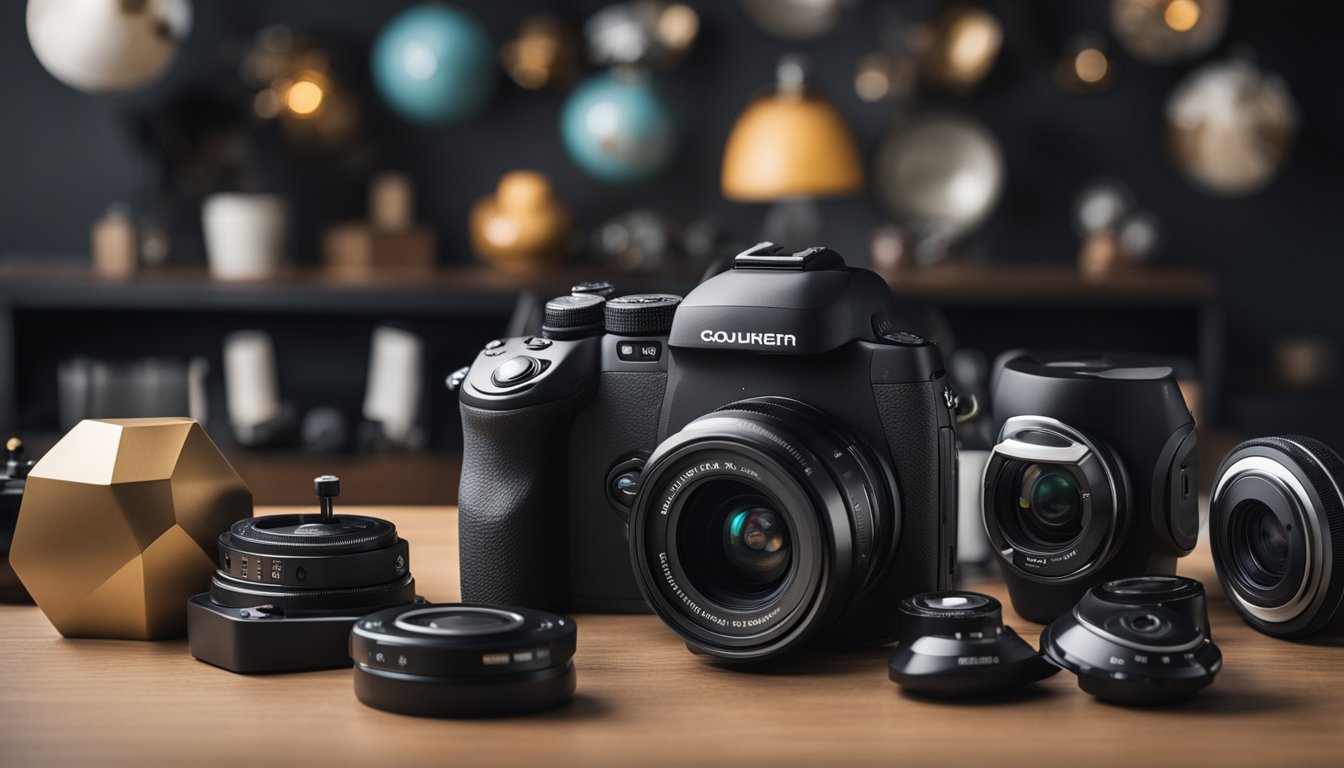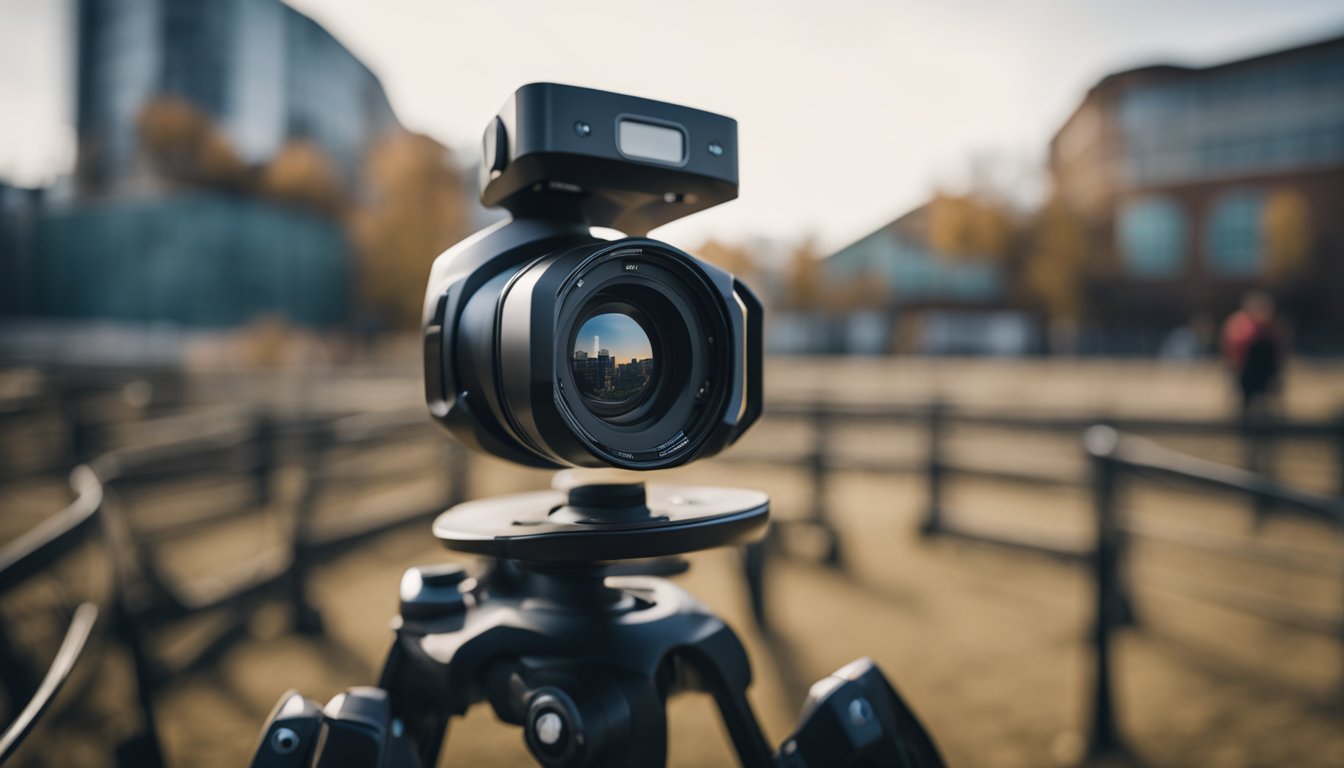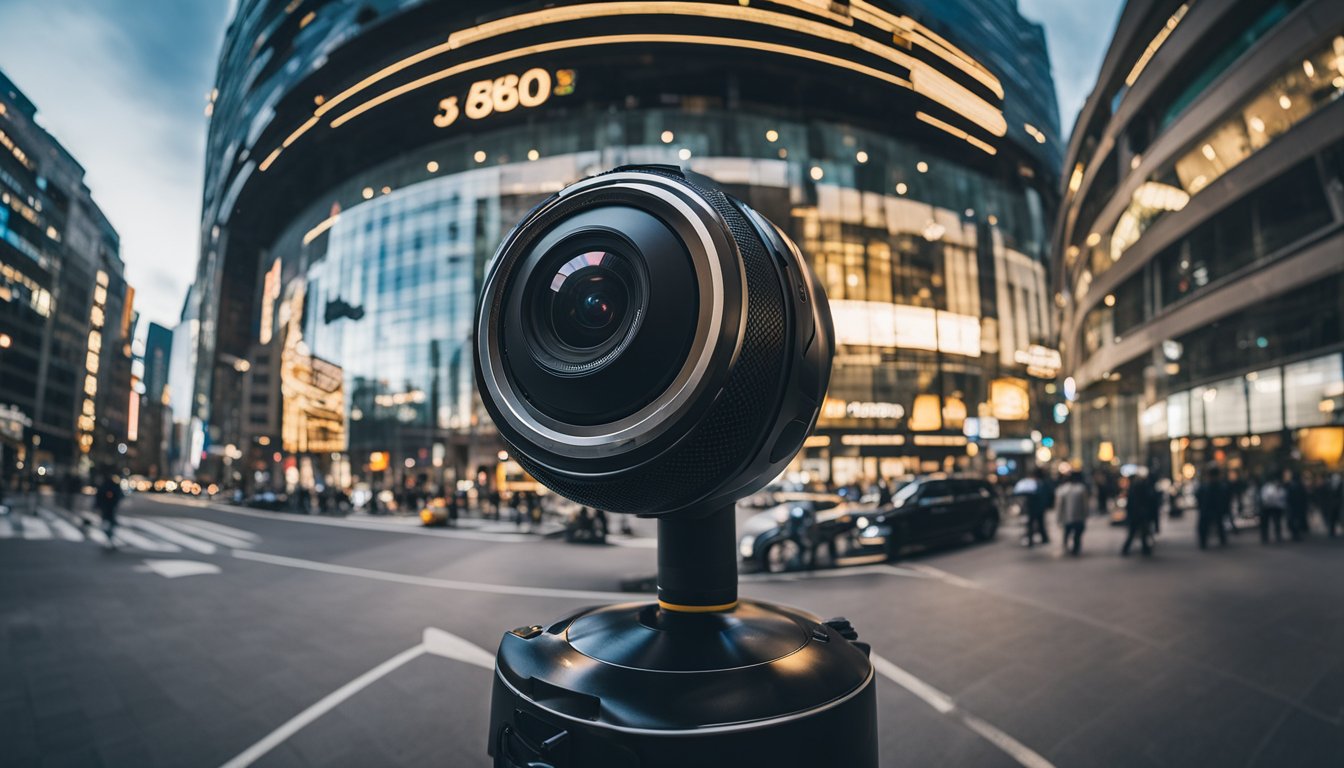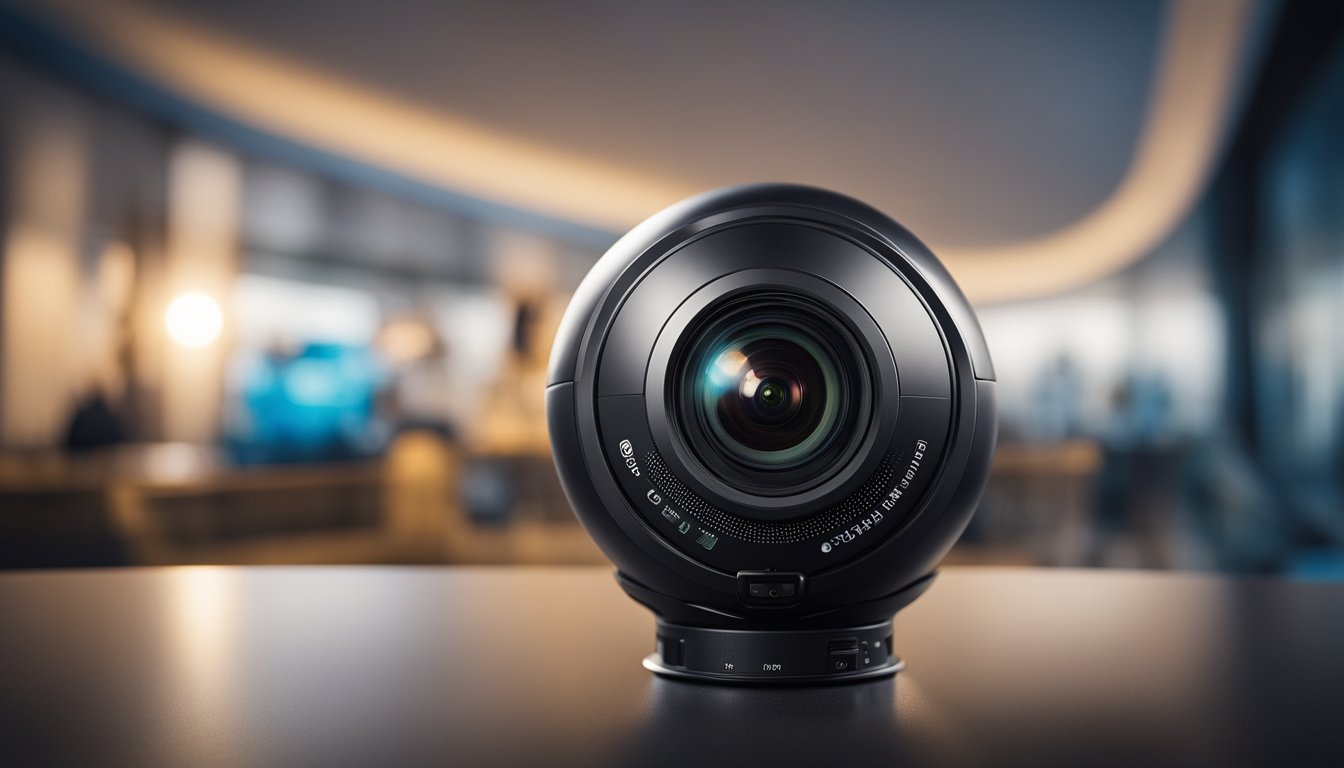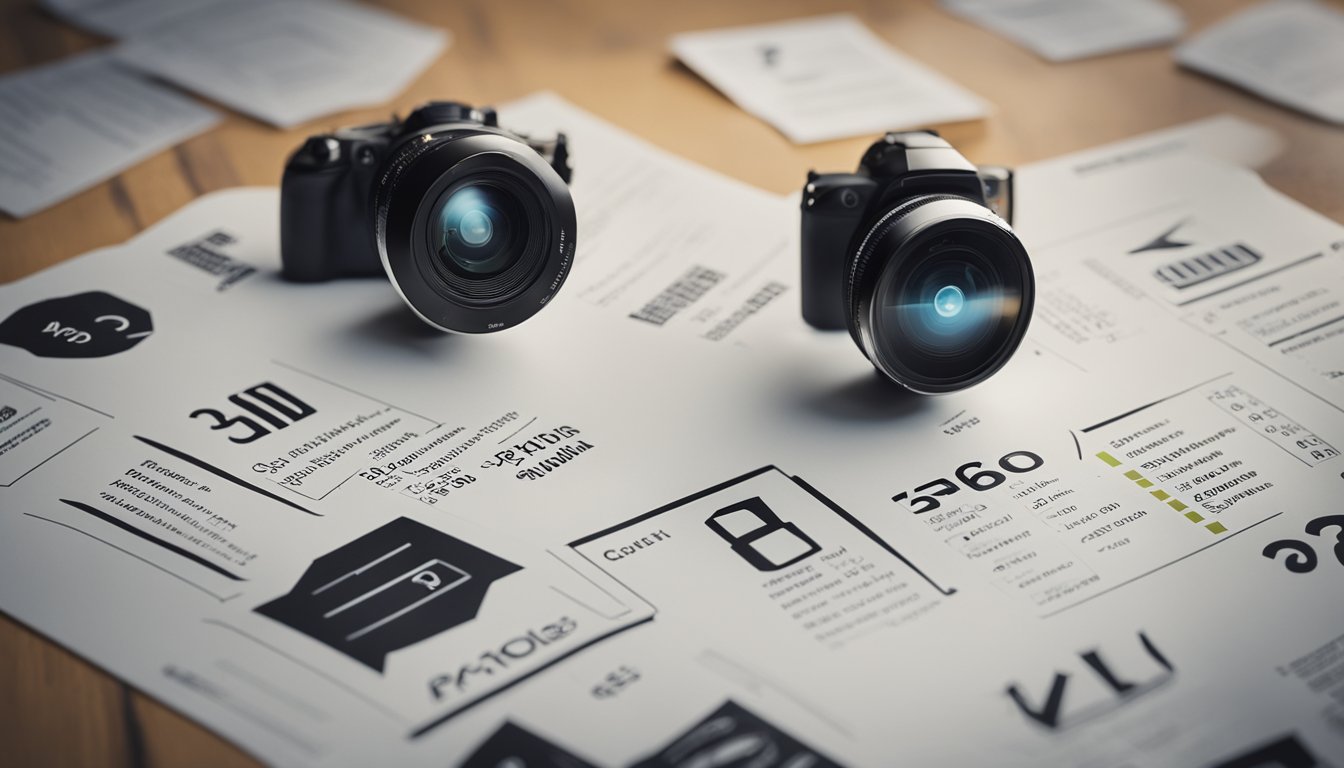360-degree cameras have revolutionized the way we capture and experience visual content. Unlike traditional cameras that offer limited viewpoints, 360 cameras provide a spherical view of the world, capturing everything around you with their dual lens system. This remarkable technology enables photographers, videographers, and everyday users to create immersive content, record complete environments, and share experiences in a way that was not previously possible.
However, with any technology, there are trade-offs to consider. On the one hand, advantages like the ability to shoot in all directions simultaneously and the creation of highly engaging content for virtual reality applications can greatly expand creative boundaries. On the other hand, there are challenges associated with 360 cameras, such as the need for specialized post-production work and the potential for lower image quality compared to standard cameras. Before investing in one, it’s essential to weigh these pros and cons against your specific needs, whether for professional use or personal enjoyment.
Key Takeaways
- 360 cameras offer a spherical view that captures a complete environment.
- They can present challenges in post-production and sometimes lower image quality.
- Weighing pros and cons is crucial for choosing the right camera for your goals.
Understanding 360 Cameras
https://www.youtube.com/watch?v=WtAiEeZiYfs&embed=true
When you’re exploring the world of photography, 360 cameras offer a unique experience. These devices allow you to capture every angle of your surroundings in a single shot. Here’s what you need to know about 360-degree cameras.
A typical 360 camera has two 180-degree lenses, often referred to as dual fisheye lenses, that simultaneously record all 360 degrees of a scene. Your camera stitches these two images together to make a seamless 360-degree photo or video—just like magic!
-
Single Lens vs. Dual Lens: Some models might use a single, ultra-wide lens, but dual-lens cameras are more common. They provide a more comprehensive coverage of the environment.
-
360 Stills & Videos: Whether you’re looking to create immersive 360 stills or dynamic video content, these cameras are designed to capture your world in full detail. You’ll see a scene in its entirety, from every conceivable angle.
Here’s a quick look at how 360 cameras stand out:

| Feature | How It Helps You |
|---|---|
| Full Coverage | No blind spots in your images |
| Immersive Experience | Feel like you’re in the photo |
| Versatility | Capture everything with one click |
Immerse your viewers in a way that standard cameras just can’t match. Whether you’re at a festival or hiking in the mountains, 360-degree cameras let you share your experiences in an incredibly engaging format. Don’t just show a part of your adventure; show it all!
Advantages of 360 Cameras
https://www.youtube.com/watch?v=UbC-_bODG9Y&embed=true
360 cameras offer unique benefits that can greatly enhance your photography and video work. From capturing every angle around you to enabling a range of creative possibilities, these tools are revolutionizing how we record and share experiences.
Immersive Experience
When you use a 360 camera, you’re not just taking a picture or a video; you’re capturing everything. The result is a pano or a 360 video that places viewers right at the center, offering a fully immersive experience. With the right equipment, you can create dynamic, spherical content that feels like stepping into the scene.
Wide Field of View
One of the most striking advantages of a 360 camera is its wide field of view. Traditional cameras limit what you can frame inside their confines. But a 360 camera lets you record every direction simultaneously, ensuring you never miss a moment. This means your composition isn’t restricted, freeing you up to capture life’s unpredictability with ease.
Creative Potential
« Cars with 360 Cameras: The Future of Safe and Effortless Driving
How to Make a Virtual Tour with a 360 Camera: A Step-by-Step Guide »
With a 360 camera, your creative potential skyrockets. You can capture vast landscapes, bustling city scenes, or intimate indoor gatherings and later choose the framing that suits your story best. Plus, since you’re working with high-resolution 360-degree photos or videos, you can experiment with different angles and perspectives without compromising on image quality.
Flexible Editing Options
Lastly, the flexibility in editing that a 360 camera provides is unparalleled. Editing isn’t just about adjusting dynamic range or colors; it’s about revisiting the scene and exploring new compositions. Whether you want to produce traditional flat videos from your 360 footage or create interactive experiences, these cameras offer a range of editing options to perfect your vision.
Choosing the Right 360 Camera
When diving into the world of 360-degree photography and videography, selecting the right camera is crucial. You’ll want to focus on features that suit your needs, compare costs, and understand the specs offered by top brands.
https://www.youtube.com/watch?v=5MvtlBYOFHg&embed=true
Important Features to Consider
- Resolution and Image Quality: High resolution is essential for clear, detailed images. The GoPro Max delivers crisp, vivid footage, while the Insta360 X3 is celebrated for its clarity.
- Stitching Capability: Look for cameras that seamlessly stitch images together to form a spherical view. The Ricoh Theta Z1 stands out with its impressive stitching technology.
- Durability and Design: Consider if you need a rugged, action-ready camera like the GoPro Max, which can handle more adventurous environments.
Budget Options Compared
- Insta360: Offers a compelling balance of features and affordability with cameras such as the Insta360 X3.
- Ricoh: Known for quality imaging, the Ricoh Theta S provides a more accessible entry point into 360-degree cameras without breaking the bank.
Top Brands and Models
- GoPro: Renowned for its action cameras, the GoPro Max is a versatile choice for those looking to capture dynamic, high-resolution videos.
- Insta360: A leader in the market, offering user-friendly interfaces and comprehensive features with models like the Insta360 X3.
- Ricoh: The Ricoh Theta Z1 is favored among professionals for its image quality and precision, though it comes at a higher price point.
- Kandao: The Kandao QooCam is notable for its high-resolution output in a compact package.
Capturing High-Quality Content
https://www.youtube.com/watch?v=RHejHmUZR_U&embed=true
When it comes to recording with a 360-degree camera, fine-tuning your camera settings is crucial for capturing high-quality content. Proper lighting and exposure are key to clarity, while resolution determines the level of detail in your images and videos.
Optimizing Camera Settings
To optimize your camera settings, start by selecting the highest resolution available to maximize image detail. In the context of 360 cameras, settings like ISO, shutter speed, and aperture are pivotal in controlling the look of your footage. Aim for a lower ISO to reduce noise and a shutter speed that corresponds with the action’s speed to maintain sharpness without blur.
Lighting and Exposure
Getting the right lighting and exposure is a balance that will ensure your videos don’t appear too dark or overwhelmingly bright. Adjust the exposure manually when faced with high-contrast scenes to avoid losing details in shadows or highlights. Some 360 cameras come with multiple exposure settings that help capture scenes with varying light conditions.
Resolution and Image Detail
The resolution of a 360 camera significantly affects the final video quality. Higher resolutions, such as 5.7K or 8K, provide finer image resolution, offering a more immersive and realistic experience. Consider cameras lauded for their resolution like the Insta360 X3 for high-quality video that captures every angle in vivid detail. Remember, higher resolutions will take up more storage space and require more power for processing.
By paying close attention to these aspects of your 360 camera’s performance, you can drastically improve the quality of your content.
Challenges and Limitations
When you’re diving into the world of 360-degree cameras, it’s vital to be aware of a few hurdles that might affect your experience. Let’s explore some of the challenges and limitations you may encounter.
Stitching Complexities
One of the most critical aspects of 360-degree photography is stitching, where multiple images are merged to form a single panoramic view. The software required for this can be complex, and if not executed properly, can result in visible seams or misalignments in your final image. While some cameras offer in-camera stitching, it often falls short in comparison to dedicated stitching software, which might be an additional cost you need to consider.
Hardware Constraints
The hardware of 360-degree cameras can also impose limitations. Due to their unique design, these cameras use fisheye lenses, which are prone to a distortion known as the “fisheye effect.” This can be a creative effect, but it may not be desirable for all types of content. Additionally, achieving effective stabilization to ensure smooth and professional-looking video can be challenging, especially in more affordable camera models where hardware stabilization might not be as sophisticated.
Post-Production and Editing
https://www.youtube.com/watch?v=z-VTr0R07Bo&embed=true
In the realm of 360-degree video production, your post-production and editing phase is crucial. You have access to a range of editing software, each providing tools to finesse your footage, while certain editing techniques are essential to stitch together your 360 content seamlessly.
Editing Software Choices
When it comes to editing software, your options are varied. For a robust solution that integrates with other creative tools, Adobe Premiere Pro stands out with features for multi-camera editing and 360-degree VR content. If you’re looking for something streamlined specifically for 360 videos, the Insta360 app is a mobile app option that simplifies the editing process.
- Adobe Premiere Pro: Known for its extensive feature set and ability to handle complex projects.
- Insta360 Software: Ideal for quick edits and instant sharing, compatible with your Insta360 camera.
Editing Techniques for 360 Content
To master editing techniques for 360 content, you need to understand the intricacies of stitching. Software usually automates this, but a keen eye is necessary to ensure that the seams are invisible. Additionally, pay attention to maintaining the quality of the video during the stitch, as distortion can occur at the stitch lines if not handled carefully.
- Stitching: Use software to combine different angles seamlessly.
- Quality Preservation: Keep an eye on resolution and distortion at stitch lines.
360 Cameras in Professional Use
https://www.youtube.com/watch?v=hoJWwD1j9io&embed=true
When you’re looking to capture every angle and detail in professional settings, 360 cameras offer unique advantages. They’re revolutionizing how visual content is created in industries like real estate and film-making.
Real Estate and Virtual Tours
360 degree cameras have become an invaluable tool within the real estate sector, facilitating virtual tours that allow potential buyers to explore properties from the comfort of their homes. These tours provide a comprehensive view, mimicking an in-person visit, which can be particularly useful for out-of-town clients or during preliminary research phases. High-quality imagery and the ability to navigate through spaces freely give your clients control over their viewing experience, leading to increased interest and engagement.
Film-making and Commercial Use
In film-making and commercial use, 360 cameras offer a cutting-edge perspective, enabling content creators to produce immersive experiences for their audience. Filmmakers are leveraging this technology to create interactive scenes, allowing viewers to choose their own focal point. Meanwhile, marketers use 360 videos for engaging commercial content, which can generate more viewer interest compared to traditional formats. The ability to capture a full scene in one shot significantly reduces production time and can result in a seamless, all-encompassing visual narrative.
Practical Applications in Everyday Life
A 360-degree camera can turn ordinary moments into immersive experiences that allow you to relive memories from every angle. Not only do they enhance your storytelling capabilities, but they also open up new avenues for creativity and sharing.
Social Media Presence
By leveraging the power of a 360-degree camera, your Instagram posts can stand out with captivating panoramic shots. Imagine pairing your camera with a selfie stick to share a 360-degree view of your coffee shop hangout or a picturesque sunset. For YouTube creators, 360-degree videos allow viewers to control their perspective, offering an interactive experience that traditional videos simply can’t match. You could create a virtual tour of your favorite spots, allowing your followers to explore as if they were right there with you.
Adventure and Sports
If you’re into sports or outdoor adventures, think of a 360-degree camera as the ultimate action camera. While mounting it on a helmet during a mountain bike ride, users can capture not just the trail ahead but also their reactions and the environment racing by—immersing your audience in the entire experience. For more intense engagement, use the camera’s capability to live-stream; your friends can watch in real-time as you conquer that steep climb or catch that perfect wave, from every possible angle. With a 360-degree camera, every adventure becomes a shared adventure.
Enhanced Features for Enthusiasts
https://www.youtube.com/watch?v=kelEKmgsauw&embed=true
When it comes to 360 cameras, as an enthusiast, you’ll find advanced features that elevate your photography and videography. These features bring a professional edge to your captures, making them stand out.
Advanced Stabilization Techniques
Your 360 camera is not just about capturing everything around you; it’s also about doing so with incredible smoothness. Advanced stabilization ensures that even when you’re on the move, the output is steady and free of jarring movements. Cameras like the Insta360 One X2 have taken stabilization seriously, incorporating sophisticated gyroscopic sensors to maintain a level horizon, even in the most action-packed scenarios.
Extended Field of Use
Dive deeper and capture more with the waterproof features of your camera. Not needing additional bulky housings, the Insta360 One X2, for example, can handle submersion up to 10 meters, expanding your creative possibilities to under the sea. But it’s not just about going deep; utilize features like active HDR and starlapse to create vividly detailed landscapes and capture the night sky in motion. These cameras even allow you to immerse your audience in the scene with VR capabilities, giving them a full, explorable perspective.
Technical Specifications
When considering a 360-degree camera, you’ll want to pay close attention to its connectivity options for transferring content, as well as its build quality to ensure it can handle your adventures.
Connectivity and Storage Options
Your 360 camera’s ability to connect to other devices is essential. Most come with Wi-Fi capabilities, allowing you to transfer photos and videos wirelessly. For direct connections, many have a USB port for transferring files or charging. When it comes to storage, these cameras often support SD and microSD cards, providing you with the flexibility to expand storage as needed. Make sure to check if your camera has a built-in storage option or if it relies entirely on external cards.
Durability and Portability
Given the nature of 360 photography and videography, a durable design is valuable. Look for cameras that have a robust build, potentially with water and shock resistance to withstand the elements. Portability is another crucial aspect as you’ll be carrying your camera around to capture immersive content. Lighter cameras with a compact form factor are preferable, and some might come with protective cases. Check if your camera has a touch screen interface, which can make it more user-friendly when you’re on the move.
Frequently Asked Questions
Before jumping into the purchase of a 360 camera, it’s wise to understand its capabilities and how they align with your needs. These FAQs will cover what to consider, comparisons with traditional cameras, and practical applications, ensuring you make an informed decision.
What should I consider before buying a 360 camera?
When looking to buy a 360 degree camera, evaluate the resolution, ease of use, software compatibility, and your specific use-case scenarios. Also, consider if the camera’s image and video quality meet your expectations.
How does a 360 camera differ from a traditional camera?
A 360 camera captures an all-around view of the surroundings in photos or videos, using two or more lenses, unlike a traditional camera which captures a limited field of view. These cameras often stitch images together to create immersive spherical content.
In what scenarios is a 360 camera more beneficial than a standard camera?
A 360 camera excels in situations where capturing a complete environment is crucial. They’re particularly advantageous for virtual tours, action sports, and events where immersive experiences, like virtual reality, are desired.
Are there any common issues when using 360 cameras for photography or videography?
Users might face challenges with stitching errors, reduced image quality at seam lines, and the need for specialized editing software. Managing the additional data required for 360 content can also pose issues.
Can 360 cameras be used effectively in professional settings?
Yes, 360 cameras are increasingly leveraged in professional realms like real estate, journalism, and film production for their ability to create engaging, interactive content. However, assess whether its features align with your professional quality requirements.
What are the long-term costs associated with owning a 360 camera?
The long-term costs can include storage for larger files, software subscriptions for editing, and potential hardware updates. Moreover, upgrades to accessories or replacement parts may factor into your budget over time.

